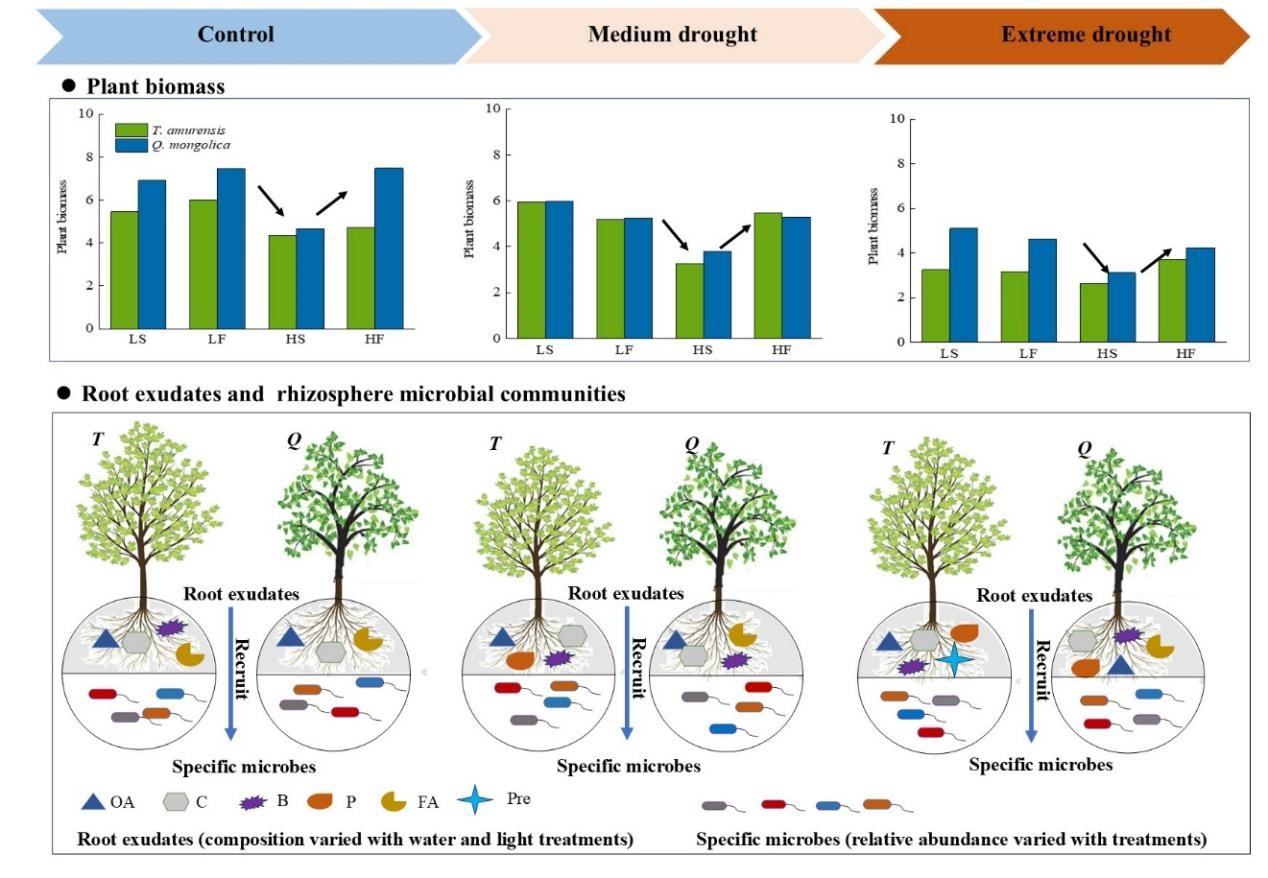Forest Tree Seedlings Adapt to Drought and Fluctuating Light through Root–Microbe Interactions
Researchers from the Institute of Applied Ecology, Chinese Academy of Sciences (CAS), have uncovered how temperate forest trees adjust their root chemistry and microbial relationships to cope with the combined stress of drought and variable light conditions. The findings offer a deeper understanding of how forest ecosystems could respond to future climate change, particularly as extreme droughts and shifting canopy structures modify light availability on the forest floor.
Light is a key environmental factor that governs photosynthesis, growth, and development in plants. In natural forests, the light environment under the canopy fluctuates constantly due to leaf movement, cloud cover, and seasonal canopy changes. As global warming drives more frequent extreme droughts and tree mortality, forest canopy gaps are anticipated to change light patterns, impacting the survival and regeneration of understory seedlings. Understanding how plants respond to the combined influences of light and drought has become essential for predicting the resilience of forest ecosystems under changing climates.
A research team led by Dr. WANG Qingwei from the Forest Ecosystem Management Group at the CAS Institute of Applied Ecology designed a controlled experiment using seedlings of two representative temperate tree species with contrasting drought tolerance: Quercus mongolica (Mongolian oak, drought-tolerant) and Tilia amurensis (Amur linden, drought-sensitive). The researchers investigated how plant growth, root exudates, and rhizosphere microbial communities respond to different combinations of water and light conditions. Their study, titled “Variation in seedling growth, root exudates and rhizosphere microbial communities of two temperate tree species under fluctuating light and extreme drought,” was published in Plant and Soil.
The results showed that both extreme drought and constant high light inhibited seedling growth in the two species. However, high fluctuating light (light intensity that changes periodically) helped mitigate the stress effects caused by constant high light. Under extreme drought, the chemical composition of root exudates differed markedly between fluctuating and steady light treatments. Organic acids and carbohydrates were identified as the primary compounds shaping the composition of rhizosphere microbial communities.
Further analysis by the researchers revealed specific associations between root exudates and microbial taxa. Certain root-secreted compounds selectively recruit beneficial microorganisms such as Actinobacteriota, which enhance the plant’s ability to adapt to both drought and fluctuating light conditions. The study also found that Quercus mongolica displayed more stable root exudate patterns and microbial responses than Tilia amurensis, confirming the former’s greater drought tolerance.
These findings reveal how root exudates and microbial interactions contribute to enhanced seedling resilience under environmental stress. This mutualistic mechanism promotes plant growth and stress resistance, highlighting the importance of root–microbe symbiosis for forest adaptation to climate change. The study provides crucial scientific evidence for enhancing forest regeneration and strengthening ecosystem stability in a warming world.

Figure 1. Conceptual diagram showing plant growth and root–microbe interaction mechanisms under different light and water conditions (Image by XIE Lulu).



